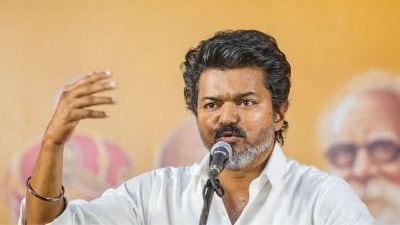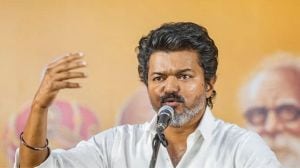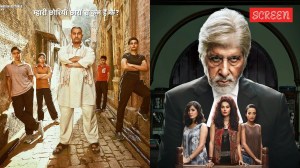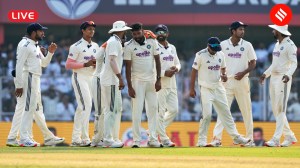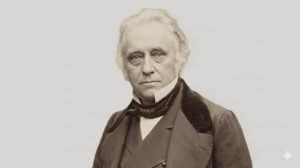Priya Kumari Shukla is a Senior Copy Editor in the Indian Express (digital). She contributes to the UPSC Section of Indian Express (digital) and started niche initiatives such as UPSC Key, UPSC Ethics Simplified, and The 360° UPSC Debate. The UPSC Key aims to assist students and aspirants in their preparation for the Civil Services and other competitive examinations. It provides valuable guidance on effective strategies for reading and comprehending newspaper content. The 360° UPSC Debate tackles a topic from all perspectives after sorting through various publications. The chosen framework for the discussion is structured in a manner that encompasses both the arguments in favour and against the topic, ensuring comprehensive coverage of many perspectives. Prior to her involvement with the Indian Express, she had affiliations with a non-governmental organisation (NGO) as well as several coaching and edutech enterprises. In her prior professional experience, she was responsible for creating and refining material in various domains, including article composition and voiceover video production. She has written in-house books on many subjects, including modern India, ancient Indian history, internal security, international relations, and the Indian economy. She has more than eight years of expertise in the field of content writing. Priya holds a Master's degree in Electronic Science from the University of Pune as well as an Executive Programme in Public Policy and Management (EPPPM) from the esteemed Indian Institute of Management Calcutta, widely recognised as one of the most prestigious business schools in India. She is also an alumni of Jamia Milia Islamia University Residential Coaching Academy (RCA). Priya has made diligent efforts to engage in research endeavours, acquiring the necessary skills to effectively examine and synthesise facts and empirical evidence prior to presenting their perspective. Priya demonstrates a strong passion for reading, particularly in the genres of classical Hindi, English, Maithili, and Marathi novels and novellas. Additionally, she possessed the distinction of being a cricket player at the national level. Qualification, Degrees / other achievements: Master's degree in Electronic Science from University of Pune and Executive Programme in Public Policy and Management (EPPPM) from Indian Institute of Management Calcutta ... Read More
UPSC Key- March 31, 2023: Know about Custodial Torture, Indo-Gangetic Plain, Korean War and Sedition Law
Exclusive for Subscribers from Monday to Friday: The Indian Express UPSC Key March 31, 2023 will help you prepare for the Civil Services and other competitive examinations with cues on how to read and understand content from the most authoritative news source in India.
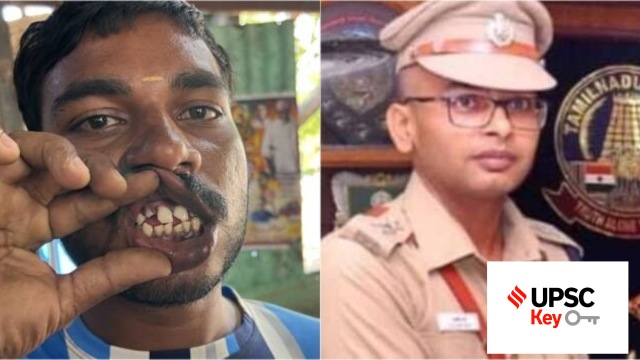 UPSC Key March 2023: Here's what you should be reading from the March 31, 2023 edition of The Indian Express
UPSC Key March 2023: Here's what you should be reading from the March 31, 2023 edition of The Indian Express Important topics and their relevance in UPSC CSE exam for March 31, 2023. If you missed the March 30, 2023 UPSC key from the Indian Express, read it here
FRONT PAGE
As TN probes custodial torture by IPS officer, victims say pressure to retract
Syllabus:
Preliminary Examination: Indian Polity and Governance-Constitution, Political System, Panchayati Raj, Public Policy, Rights Issues, etc.
Mains Examination:
• General Studies II: Role of civil services in a democracy.
• General Studies IV: Public/Civil service values and Ethics in Public administration
Key Points to Ponder:
• What’s the ongoing story- As Tamil Nadu probes charges of men being tortured in custody by IPS officer Balveer Singh his suspension was announced Wednesday in the state Assembly by Chief Minister M K Stalin several among his 13 alleged victims have come forward to say they are under police pressure to retract their statements. They have also detailed the manner in which they were tortured in custody in Ambasamudram where Singh was posted as Assistant Superintendent of Police — common to all cases was the alleged removal of teeth using jelly rocks, and testicles being crushed in two cases.
• Removal from the post and suspension from the post-Compare and Contrast
• Removal, dismissal and suspension-know the terms
• For what social purpose do police exist?
• ‘According to the Law Commission of India, the weak and poor are the worst sufferers of custodial crimes. The recent Tamil Nadu incident attests the same’-discuss
• What do you understand by ‘Custodial Torture’?
• What Supreme Court has said about ‘Custodial Torture’?
• Custodial Torture and Custodial death-Connect the dots
• Custodial tortures in India-Know the data’s and statistics
• What are the constitutional provisions to prevent custodial torture?
• What are the constitutional provisions to prevent custodial torture?
• Article 22 grants protection to persons who are arrested or detained-know them in detail
• Detention is of two types, namely, punitive and preventive-Know them in detail
• Punitive Detention and Preventive Detention-Compare and Contrast
• Article 22 confers certain rights on a person who is arrested or detained under an ordinary law-What are they?
• What is the law on custodial torture and custodial death in India?
• What was the Supreme Court’s guidelines in DK Basu vs State of West Bengal?
• What was the Nilabati Behera vs the State of Orissa (1993) case?
• The Supreme Court of India has the power to protect the fundamental rights of the people-Attest this with the court’s order in the Nilabati Behera vs. State of Orissa (1993) case.
Other Important Articles Covering the same topic:
📍UPSC Ethics Simplified: Indian Police and Ethics
EXPRESS NETWORK
Not fugitive, but rebel, says Amritpal; terms ‘Sarbat Khalsa’ a test for Jathedar
Syllabus:
Preliminary Examination: Current events of national and international importance and History of India and Indian National Movement.
Mains Examination:
• General Studies I: Indian culture will cover the salient aspects of Art Forms, literature and Architecture from ancient to modern times.
• General Studies II: Government policies and interventions for development in various sectors and issues arising out of their design and implementation.
Key Points to Ponder:
• What’s the ongoing story-Amid the ongoing manhunt to arrest him, radical Sikh preacher Amritpal Singh Thursday claimed that he was a “rebel” and not a fugitive and will not surrender and reiterated his call for ‘Sarbat Khalsa’ while challenging Akal Takht Jathedar Giani Harpreet Singh saying it was “a test” of his seriousness towards the community and that he should also come clean “on the allegations that he acts under the influence of a family”. In a fresh video, his second in two days, the Waris Punjab De chief, who is on the run for the past 13 days, also sought to debunk the speculation that he was negotiating his surrender.
• What is Khalsa for the Sikhs
• Khalsa and Khalistan-how these two words are different from each other?
• Sikhs and Sikhism-Know the historical background
• Bhakti Movement and Sikhism-Connect the Dots
• Guru Nanak, the founder of Sikhism-Know in detail
• The Akali movement or the Gurdwara Reform Movement, in India during the early 1920s-What were the reasons behind reform movement?
• The Akali movement, the introduction of the Sikh Gurdwara Bill in 1925 and Shiromani Gurdwara Parbandhak Committee (SGPC)-Connect the Dots
• What is the origin of Khalistan movement?
• What you know about the Khalistan movement?
• What are the Historical events responsible for Khalistan?
• What was the Anandpur Sahib Resolution?
• When did Jarnail Singh Bhindranwale come into the picture?
• What happened in the aftermath of Operation Blue Star?
• What is the status of the Khalistan movement today?
• Who is Amritpal Singh?
• What is Sarbat Khalsa?
• For Your Information-The word sarbat means ‘all’, and literally, the Sarbat Khalsa is an assembly of all factions of Sikhs (Khalsa). The idea of a deliberative assembly of Sikhs dates back to the 18th century. Following the death of the tenth Guru, Guru Gobind Singh, the Sikh misls (military units) began to convene the Sarbat Khalsa to discuss political, social, and religious issues of great importance to the community, which was then in the midst of its struggle against the Mughals. These gatherings, called twice a year on the occasion of Baisakhi and Diwali, had the power to issue directions to all Sikhs. The Sarbat Khalsa was first institution of Sikhs that took shape after the tradition of Guru in human form came to end, and turned out to be very effective amid the internal conflicts among the misls. The historian Henry Prinsep, who wrote one of the earliest histories of the Sikhs in the first half of the 19th century, recorded that despite their fierce sense of independence, all the Sikh misls sat together at the Sarbat Khalsa without any conflict.
Other Important Articles Covering the same topic:
📍History and significance of the Sikh assembly that Amritpal Singh wants the Akal Takht to convene
Previous Year Prelims Questions Based on Similar theme:
📍 Consider the following Bhakti Saints:
1. Dadu Dayal
2. Guru Nanak
3. Tyagaraja
Who among the above was/were preaching when the Lodi dynasty fell and Babur took over? (Please refer Prelims 2013 GS question Paper for complete question)
THE CITY
Why capital tops list of six polluted spots across Indo-Gangetic Plain
Syllabus:
Preliminary Examination: General issues on Environmental ecology, Bio-diversity and Climate Change
Mains Examination: General Studies III: Conservation, environmental pollution and degradation, environmental impact assessment.
Key Points to Ponder:
• What’s the ongoing story– While Delhi may not be the most polluted spot in the Indo-Gangetic Plain during winter, it tops a list of six spots across the plain in terms of annual average pollution levels. Experts attribute high pollution levels all year round in the national capital to a high concentration of pollution sources.
• What is meant by Indo-Gangetic Plain?
• Where is Indo-Gangetic Plain located in India?
• Map Work-Indo-Gangetic Plain
• What is the geography behind Indo-Gangetic Plain?
• Indo-Gangetic Plain and Gangetic Plain-Same or different?
• High pollution levels all year round in the national capital-Why?
• Recent report submitted by a joint committee appointed by National Green Tribunal-Which report?
• For Your Information-A report submitted by a joint committee appointed by National Green Tribunal this January considered seasonal variations in PM2.5 levels for 2019 at Delhi (ITO), Amritsar, Murthal, Lucknow, Patna and Kolkata. Across these six spots, the highest PM2.5 concentration was found to be in Patna (208 µg/m3) in winter, from December to February, followed by Delhi (176 µg/m3). In two other seasons — summer and post monsoon, which cover the periods from March to May and September to November respectively — Delhi has topped the list of six spots. In summer, the PM2.5 level in Delhi was 87 µg/m3, followed by Lucknow with 83 µg/m3. Similarly, in post monsoon season, Delhi had a significantly higher PM2.5 level of 125 µg/m3 while Haryana’s Murthal had a level of 58 µg/m3 during the same period. In the monsoon, from June to August, Delhi had a PM2.5 concentration of 51 µg/m3, a close second after Murthal which had a concentration of 59 µg/m3. The analysis used data from the Central Pollution Control Board (CPCB) and the report was submitted on orders of the NGT.
• What experts are saying?
• Expert opinion-An expert, who was part of the committee that prepared the report and did not want to be named, said that in Delhi the sources of pollutants are in higher concentration. “There is a high population in the area and congestion, resulting in concentration of sources of emissions. If you look at emissions per square kilometre area, this region has higher emissions. There are polluting sources in Punjab and Haryana, and Delhi is in proximity, which means there is impact of these emissions as well,” the expert said.
• What keeps Delhi’s air polluted?
• Why Delhi pollution is always in News?
• What are the reasons for Air pollution in Delhi?
• Know the Geographical location of Delhi
• Do You Know- The recent World Air Quality Report, which is prepared by IQAir, also ranked Delhi fourth on a list of 50 of the world’s most polluted cities in terms of PM2.5 levels in 2022. Delhi had an average PM2.5 level of 92.6 μg/m3 in 2022, a little below the average of 96.4 μg/m3 in 2021. The most polluted city in the world was found to be Lahore, followed by Hotan in China, and Bhiwadi in Rajasthan, according to the report. The average PM2.5 concentration in Bhiwadi was 92.7 μg/m3. Delhi has retained its ranking on this list, it stood fourth in 2021 as well. The WHO guideline for annual PM2.5 levels is 5 μg/m3.
• Being landlocked makes Delhi worst in air pollution-How far you agree with this?
• Know the Supreme Courts Judgments on Delhi Air Pollutions
• “Delhi has converted into a gas chamber”-Discuss
• For Your Information-IQAir is a Swiss air quality technology company that prepares annual world air quality reports based on data from monitoring stations operated by governments and other institutions and organisations across the world. The 2022 report is based on PM2.5 data from 7,323 cities and 131 countries. A total of 39 Indian cities (including ‘Delhi’ and ‘New Delhi’) are on the list of 50 of the world’s most polluted cities based on annual average PM2.5 levels in 2022. These include cities like Noida, Gurgaon, Bulandshahr, Meerut, Charkhi Dadri, Jind, Ghaziabad, Faridabad, and Greater Noida. Delhi’s annual average PM2.5 level in 2020 was 84 µg/m3, and 98.6 µg/m3 in 2019, according to IQAir. In 2022, Delhi’s average PM2.5 level was found to be highest in November.
• Air Quality Management in NCR Region-Role and Steps Taken so Far
• Know the best International Practices to Curb Air Pollution in Urban Areas
• What is Graded Response Action Plan (GRAP)?
• What are the different Air Quality Index (AQI) categories under Graded Response Action Plan?
• What are the different stages under Graded Response Action Plan?
• Has GRAP helped?
• What was the Supreme court’s verdict in M. C. Mehta vs. Union of India (2016) regarding air quality in the National Capital Region of Delhi?
• Commission for Air Quality Management (CAQM)-Know in brief
• Is Commission for air quality Management statutory body?
• System of Air Quality and Weather Forecasting And Research (SAFAR) Project-Know in brief
• What is the framework developed by SAFAR to forecast air quality in Delhi?
Other Important Articles Covering the same topic:
📍Delhi air pollution: Biggest culprit this year, and possible solutions
GOVT & POLITICS
After 108 women officers, 40 more set to get Colonel rank
Syllabus:
Preliminary Examination: Indian Polity and Governance-Constitution, Political System, Panchayati Raj, Public Policy, Rights Issues, etc.
Mains Examination: General Studies I: Role of women and Social empowerment
Key Points to Ponder:
• What’s the ongoing story– AROUND 40 more women Army officers are set to be cleared for the rank of colonel (selection grade) in phases over the next two to three years, a move that will make them eligible to command units in their respective arms and services in the future, senior officials familiar with the matter told The Indian Express. At present, Women Officers Special No. 3 Selection Board proceedings are under way at Army headquarters for considering 20 officers from the Army Service Corps and 17 officers from the Army Ordnance Corps from the 2006 batch for promotion to the rank of Colonel from Lieutenant Colonel, to bring them on a par with their male counterparts.
• Why is this significant?
• Know the timeline of induction of women in the Indian Defence forces
• What is number and percentage of women officers in Indian Army, Airforce and in the Indian Navy?
• What is permanent commission?
• What is the present scenario for the women entry in the Indian armed forces?
• For Your Information-The SC order to grant permanent commission to women Army officers in Feb 2020 opened the doors for their promotion across all streams of the Army, except pure combat arms. Subsequently, several women officers are undergoing special training courses and military assignments, which will empower them for higher leadership roles. A total of 108 women officers out of 244 from 1992 to 2006 batch were cleared for the rank of colonels by a special selection board in January this year and they have already assumed command roles in various Army units across the country.
• Permanent Commission and Short Service Commission-Compare and contrast
• What is the procedure for granting permanent commission?
• After Supreme Court’s directive, how exactly women will be benefitted?
• How Principle of non-discrimination on the ground of sex under Article 15 and Right to equality of opportunity for all citizens in matters of public employment under Article 16 is applicable in the armed forces?
• Why Women in the Indian defence forces should be given Permanent Commission?
• Do You Know-There are 10,493 women officers serving in the armed forces, the majority in the medical services. The Indian Army, being the largest of the three services, has the largest number of women officers at 1,705, followed by 1,640 women officers in the Indian Air Force, and 559 in the Indian Navy – this data was provided by the government to Parliament last year.
Other Important Articles Covering the same topic:
THE EDITORIAL PAGE
Syllabus:
Preliminary Examination: Indian Polity and Governance-Constitution, Political System, Panchayati Raj, Public Policy, Rights Issues, etc.
Mains Examination: General Studies II: Issues relating to development and management of Social Sector/Services relating to Health, Education, Human Resources.
Key Points to Ponder:
• What’s the ongoing story-Shah Alam Khan Writes: On March 21, Rajasthan became the first state in India to pass the Right to Health (RTH) bill. The bill allows free access to out-patient and inpatient services in all government and selected private hospitals in the state. Ever since the bill was passed, the medical fraternity has been up in arms against it. In a nutshell, the majority of doctors feel that the RTH bill is an assault on their “business model”. This needs to be seen in context of a nation reeling under the broken moral compass across various spheres of life be it political, social or professional and not merely limited to health care providers.
• Right to Health Bill-Know key highlights
• What is outpatient and inpatient service?
• ‘Rajasthan is not a “healthy” state by any standards’-What data and statistics says?
• For Your Information-In 2022, in a report titled “Healthy states, progressive India”, the NITI Aayog, World Bank and the Union Ministry of Health and Family Welfare, had placed Rajasthan at 16th position among 19 big states. As per the National Family Health Survey -5 (2019-21), the infant mortality rate and the neonatal mortality rate in the state are 30.3 per 1,000 live births and 20.2 per 1,000 live births respectively. Such high rates of childhood mortality speak poorly of the healthcare infrastructure of the state. It is one of the states with highest levels of nutritional anaemia among women and children. The doctor-population ratio of the state is at an astoundingly low level of five doctors per 10,000 population (in comparison, it is 21 per 10,000 population in Jammu and Kashmir).
• “With such a dismal health picture, Rajasthan was the ideal state to formulate and implement the RTH bill”-How far you agree?
• “The protest of the state’s medical fraternity against the bill is extraordinary”-Why are the doctors protesting?
• What do public health experts say?
• ‘The main grudge of the protesting doctors of Rajasthan is the clause in the bill according to which any resident of the state will have the right to emergency treatment and care without prepayment at all hospitals and healthcare centres’-What is emergency as per Right to health bill?
• For Your Information-According to the Bill, free healthcare services, including consultation, drugs, diagnostics, emergency transport, procedure and emergency care, will be provided at all public health institutions and select private facilities subject to conditions specified in the rules, which will be formulated now. Also, all residents will be entitled to emergency treatment and care for accidental emergency without prepayment of any fee or charges. Importantly, in a case of medico-legal nature, no public or private hospital can delay treatment merely on the grounds of receiving police clearance. The legislation also says that “after emergency care, stabilisation and transfer of patient, if patient does not pay requisite charges, the healthcare provider shall be entitled to receive requisite fee and charges or proper reimbursement from the state government”. The law extends a total of 20 rights to the residents of the state.
• Right to Health Bill-What is the rationality behind this bill?
• What is right to health under Indian constitution?
• If Right to health is a part of Article 21 of Indian constitution, then what is the issue with Right to health bill??
• Right to Health and Directive Principles of State Policy (DPSP)-Connect the dots
• What is Vincent v Union of India case?
• What Supreme Court said in Vincent v Union of India case?
• This Article has been regarded as the heart of Indian Constitution, the most organic and progressive provision in the Indian Constitution-Name the Article
• The Bill was tabled in the Assembly in September last year but was sent to the Select Committee following objections by the opposition-Why opposition is opposing?
• What are the issues and Challenges with Right to Health Bill?
• What are the possible implications of mandating free healthcare?
Other Important Articles Covering the same topic:
📍Docs vs Rajasthan health Bill
EXPLAINED
Syllabus:
Preliminary Examination: History of India
Mains Examination: General Studies I: History of the world will include events from 18th century such as industrial revolution, world wars, redrawal of national boundaries, colonization, decolonization, political philosophies like communism, capitalism, socialism etc.— their forms and effect on the society.
Key Points to Ponder:
• What’s the ongoing story– In its G20 year, India has declared it will represent the voice of the “Global South” for peace. Prime Minister Narendra Modi’s message to Russian President Vladimir Putin that “This is not the era of war” has won him plaudits from the Western alliance that is backing Ukraine. It has given rise to expectations in some quarters that India, which often casts itself in the role of “Vishwaguru”, could use its good offices with both Kyiv and Moscow to help bring the war to an end. It has also rekindled interest in the only other diplomatic intervention by India in a distant war seven decades ago — one that revealed both its international heft as well as exposed its limitations.
• Korean War-When, why where and what?
• Who started the Korean War?
• Map Work-North Korea and South Korea
• India played a unique role throughout the Korean War-How?
• Do You Know-As the 1950 Korean War pitted Cold War opponents against each other, Prime Minister Jawaharlal Nehru made a huge diplomatic push to prevent an escalation into another world war, and for the parties to arrive at a quick ceasefire. The efforts were only partially successful. Even so, India is counted among the countries that contributed to bringing the war to a close. New Delhi also discharged an important role in the months after the truce, as chair of a committee to repatriate prisoners of war. In a 2013 essay, ‘Between the Blocs: India, the United Nations, and Ending the Korean War’, published in The Journal of Korean Studies, British historian Robert Barnes documented the efforts of Nehru and his envoys to bring the war to a “swift conclusion, prevent the UN from adopting a policy that might lead to its escalation, and to reconcile the divergent positions of the two superpower blocs”. A couple of attempts by India to bring about a ceasefire ended in failure. However, its 1952 proposals for the exchange of prisoners enabled the July 1953 armistice agreement, which marks 70 years this year.
• At the time of the invasion, India was among the six non-permanent members of the Security Council, and held its rotating presidency that month. Three resolutions on the war came up in quick succession-What were those resolutions?
• Who was V K Krishna Menon?
• V K Krishna Menon and Korean War-connect the dots
Other Important Articles Covering the same topic:
📍70 years of the Korean War: India’s lesser-known role in halting it
FOOD FOR THOUGHT IN CLIMATE CRISIS: A WOOLLY MAMMOTH MEATBALL
Syllabus:
Preliminary Examination: Current events of national and international importance.
Mains Examination: General Studies III: Science and Technology- developments and their applications and effects in everyday life.
Key Points to Ponder:
• What’s the ongoing story– Australian startup Vow, on Tuesday (March 28), lifted the glass cloche on a meatball made of lab-grown cultured meat using the genetic sequence from the long-extinct woolly mammoth, the AP reported. The mammoth meatball, sized slightly smaller than a volleyball, was unveiled at a museum in Amsterdam. While this will be a one-off creation, perhaps garner publicity for the food-tech company, founder Tim Noakesmith told the AP that through the mammoth meatball, the company hoped to start a conversation around global meat consumption.
• How was the woolly mammoth meatball made?
• Can this meatball be eaten?
• What is the meat industry’s role in climate change?
• Is cultivated meat the solution?
Other Important Articles Covering the same topic:
📍Explained: How new tech is raising the bar for lab-grown and vegetarian meats
📍Lab-grown meat: Cleared in Singapore, an emerging alternative worldwide
THE WORLD
Pak court strikes down sedition law
Syllabus:
Preliminary Examination: Current events of national and international importance.
Mains Examination: General Studies II: India and its neighborhood- relations.
Key Points to Ponder:
• What’s the ongoing story-The Lahore High Court Thursday invalidated the provisions of Section 124A of the Pakistan Penal Code, also referred to as its “sedition law”. Section 124A made it a crime to engage in sedition or “disaffection” against the government. Justice Shahid Karim of the Lahore High Court, struck down Section 124A of the PPC, in response to a batch of petitions seeking to declare the provision as unconstitutional or “ultra vires” the fundamental rights enshrined in the Constitution under Article 9, 14, 15, 16, 17, 19 and 19A.
• What is Pakistan’s sedition law?
• What happened in the present case?
• Where does India stand on the sedition law?
• What do you understand by ‘Sedition’?
• Sedition laws in India-Know about them
• Historical Background of Sedition Law-Who drafted it?
• When was sedition law used against Mahatma Gandhi and BG Tilak?
• What is Section 124A of Indian Penal Code?
• Punishment for the Offence of Sedition in India-Know in detail
• What is the fresh challenge to sedition law?
• Sedition laws in other countries-Compare and Contrast
• What is the Supreme Court’s stand on it?
• Supreme Court Decisions and Discussions on Sedition Law?
• Supreme Court’s Landmark decision in Kedar Nath Singh v. State of Bihar (1962) case and the Balwant Singh vs State of Punjab (1995) case-know in detail
• What are the Kedar Nath Singh guidelines?
• What does the Law Commission of India say on sedition?
• National Crime Records Bureau (NCRB) report statistics on the Sedition Law-Know the facts and figures given by NCRB
• Problems with the sedition laws-Brainstorm
• Legal flaws and spurious interpretation of Sedition Law?
• Mahatma Gandhi on Section 124A as the “prince among the political sections of the Indian Penal Code designed to suppress the liberty of the citizen”-Decode the Quote
• How Section 124A of the Indian Penal Code (IPC) contradicts Article 14 and Article 21 of the Indian Constitution?
Other Important Articles Covering the same topic:
📍 Explained: What is the sedition law, and why Supreme Court’s fresh directive is important
For any queries and feedback, contact priya.shukla@indianexpress.com
The Indian Express UPSC Hub is now on Telegram. Click here to join our channel and stay updated with the latest Updates.
UPSC Magazine

Read UPSC Magazine






- 01
- 02
- 03
- 04
- 05



